
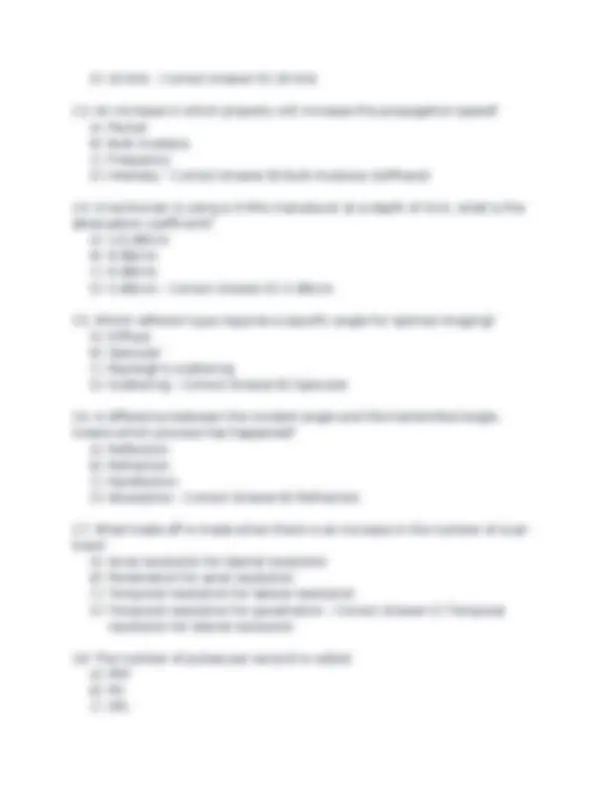
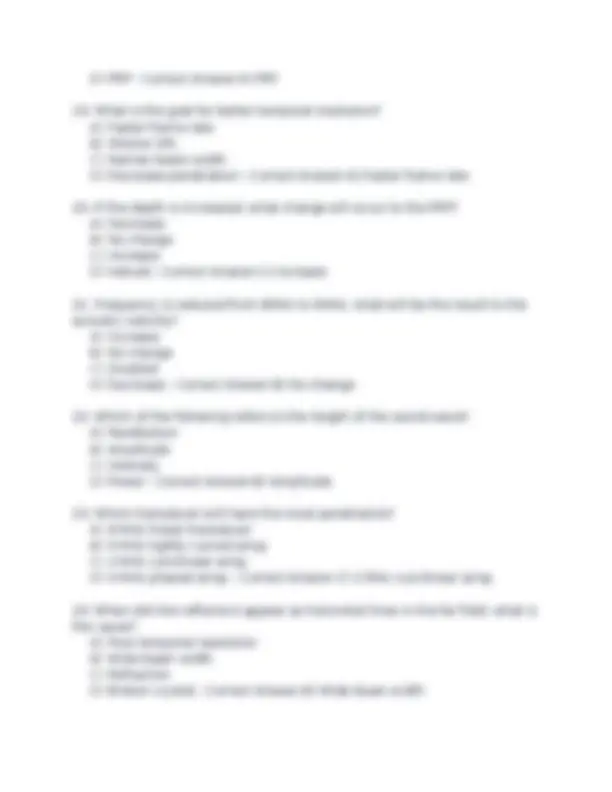
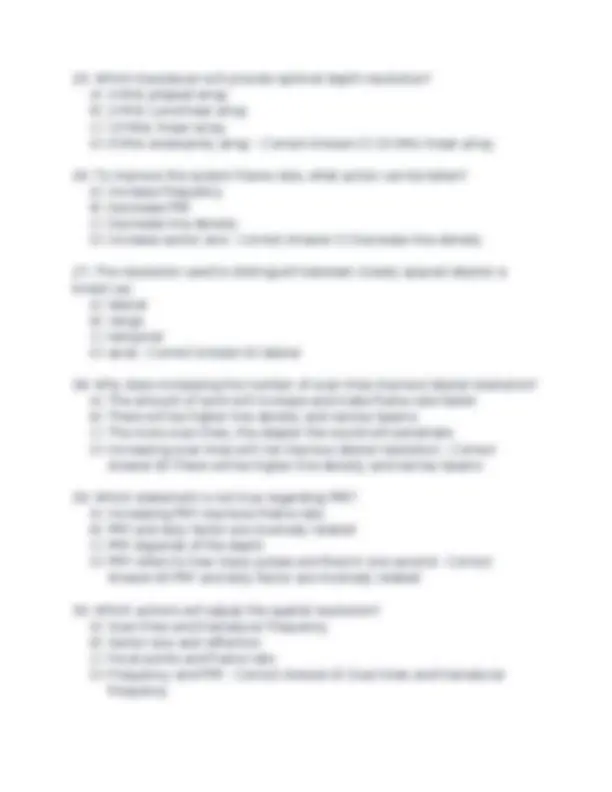

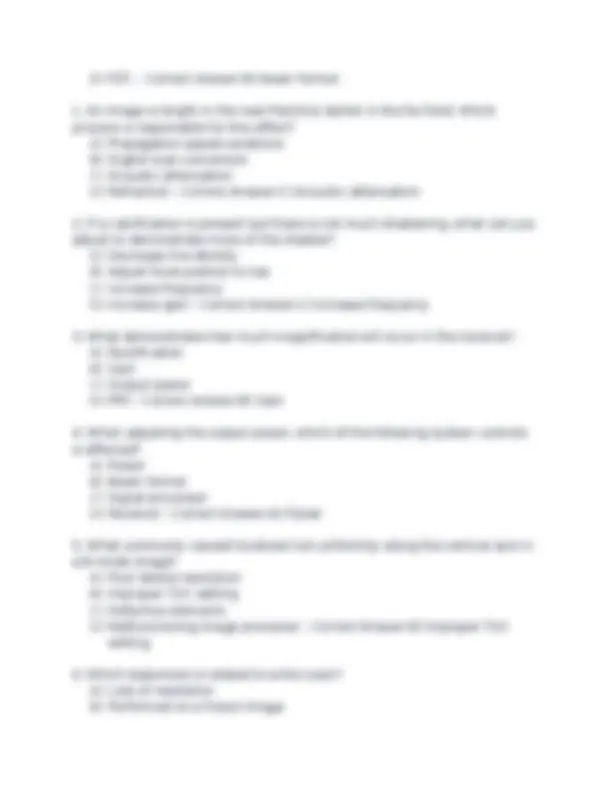
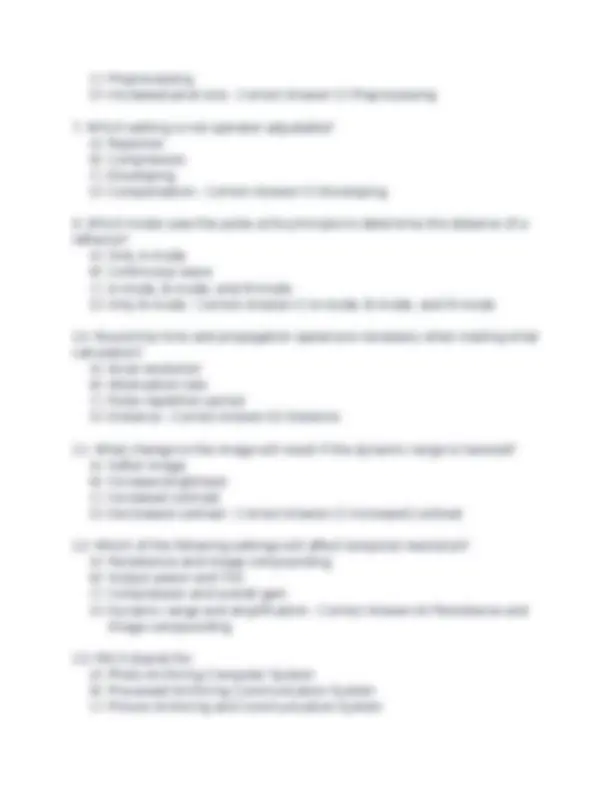
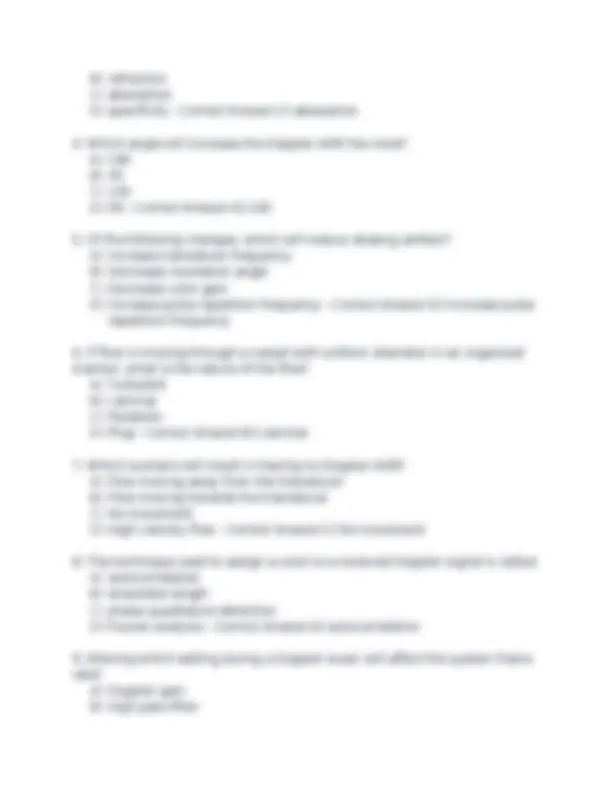
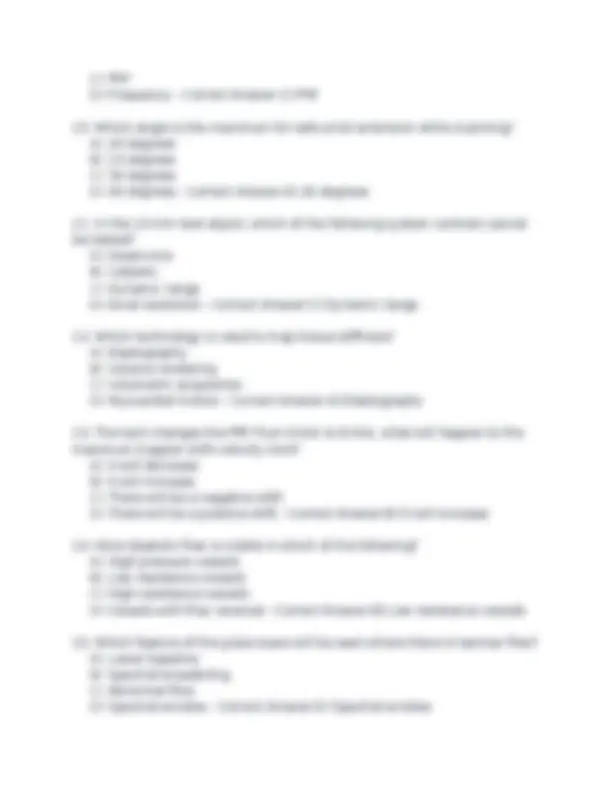
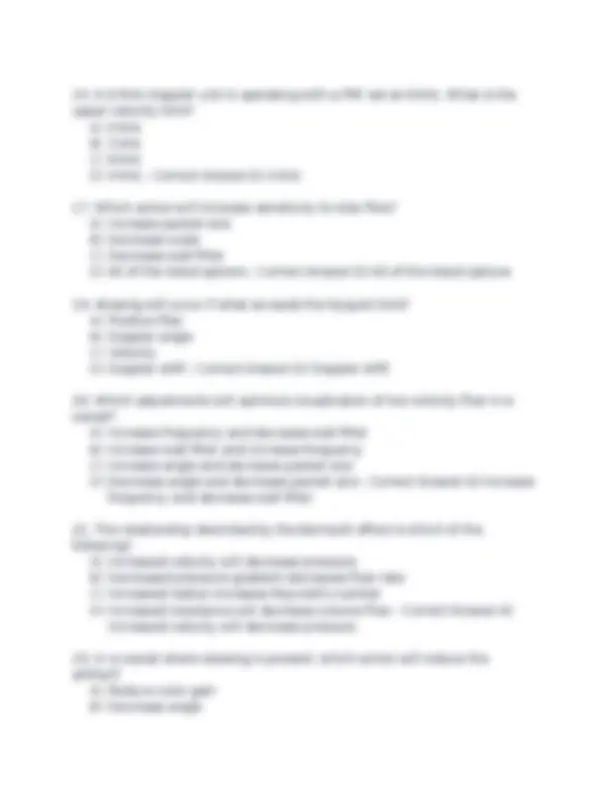
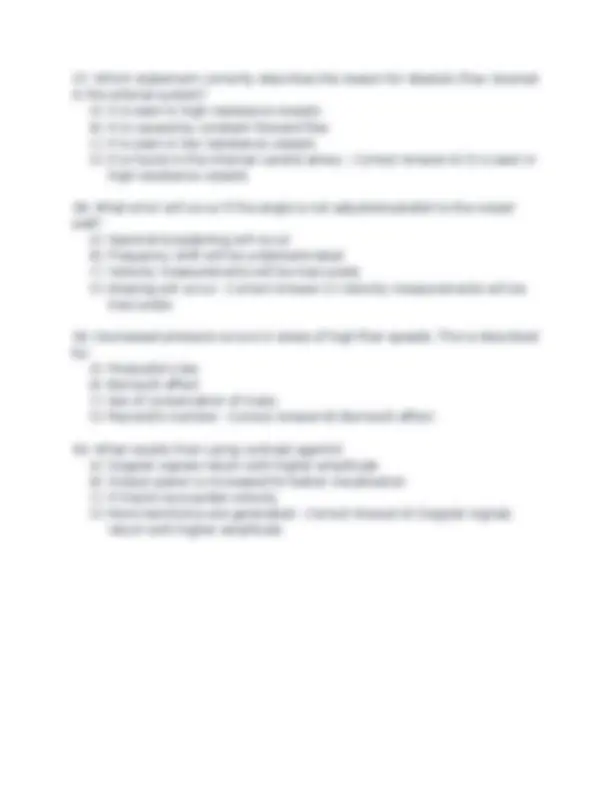


Study with the several resources on Docsity

Earn points by helping other students or get them with a premium plan


Prepare for your exams
Study with the several resources on Docsity

Earn points to download
Earn points by helping other students or get them with a premium plan
Community
Ask the community for help and clear up your study doubts
Discover the best universities in your country according to Docsity users
Free resources
Download our free guides on studying techniques, anxiety management strategies, and thesis advice from Docsity tutors
Various concepts and principles related to ultrasound physics and instrumentation. It discusses the properties of sound waves, including wave propagation, attenuation, and impedance. The document also covers topics such as transducer design, beam formation, image resolution, doppler principles, and image processing techniques. The information provided can be useful for students and professionals in the field of medical imaging, particularly those studying or working with ultrasound technology. A wide range of topics, from the basic physics of sound waves to the advanced techniques used in modern ultrasound imaging systems.
Typology: Exams
1 / 18

This page cannot be seen from the preview
Don't miss anything!











When the direction of the wave propagation is parallel to the particle motion of the medium, the wave being transmitted is called a: A) surface wave. B) longitudinal wave. C) transverse wave. D) non-linear sound. - Correct Answer-B) longitudinal wave If the sound beam attenuated 6 dB, what will happen to the overall intensity? A) Quadrupled B) Doubled C) Halved D) Quartered - Correct Answer-D) Quartered Frequency increased from 3 MHz to 6 MHz, what will happen to wavelength? A) Doubled B) Quadrupled C) Halved D) Quartered - Correct Answer-C) Halved Intensity is equal to: A) power/area B) propagation speed/frequency C) density x propagation speed D) area/power - Correct Answer-A) power/area
C) propagation speed D) tissue density - Correct Answer-B) tissue attenuation
D) PRP - Correct Answer-A) PRF
A) Mirror B) Mechanical C) Transmit D) Lens - Correct Answer-C) Transmit
C) Preprocessing D) Increased pixel size - Correct Answer-C) Preprocessing
D) Picture And Communication Setup - Correct Answer-C) Picture Archiving and Communication System
B) refraction C) absorption D) specificity - Correct Answer-C) absorption
D) Frequency - Correct Answer-C) PRF
C) Decrease transducer frequency D) Increase packet size - Correct Answer-C) Decrease transducer frequency